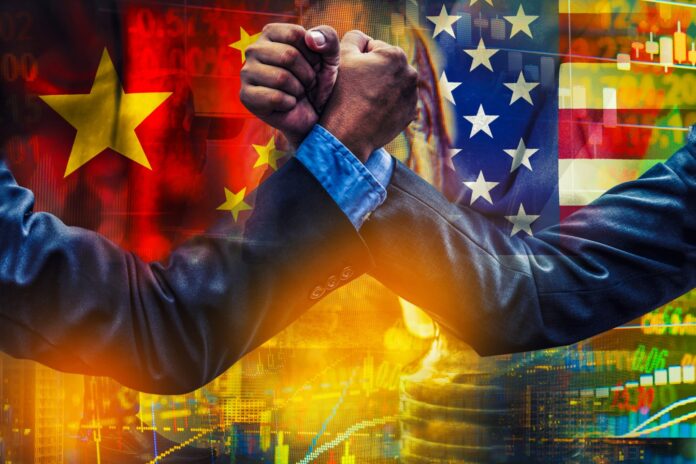BY Mr.FARHAN LATEEF
A Constructive relationship between U.S. and China is in the better interests of both each of these two and for the remaining world wary of seeing their leadership role.
Both countries have acquired such a position where it becomes their responsibility and a moral obligation to lead the world toward a more just and rules-based international system. Creating a conflict-driven environment which is in no one’s interest should be upended. Instead, an environment of cooperation where both should pursue their policies to lead the world to prosperity and a conflict-free world is the need of the hour. There are a lot of bilateral as well as multilateral issues of common interests that can be handled well together in a constructive manner.
Unfortunately, policymakers of both states are under cognitive dissonance holding conflicting ideas simultaneously. Conflicts over ideologies and in the technical and economic realm are getting acceleration. Compromising their long-term interests over near-term imperatives both are pursuing enmity-like interactions.
Such interactions have cascading effects on the world. The deteriorating effects of these narratives specifically on America’s relations with its global partners have diminished partner’s confidence. America’s global partners often question the sustainability and wisdom of the American approaches. Such approaches drive the solutions farther out of reach of the issues of international attention like climate change, nuclear proliferation and handling of a pandemic crisis. China’s alleged rights abuses of its citizen, alleged technological theft, its disputes in the South China Sea and East China sea and the so-called its debt trap policies have raised concerns about its being a responsible global power. In this way, both are undermining the effectiveness of the norms, rules and institutions that underpin international peace and the free flow of goods and services. And reducing the diplomatic space to reduce their tensions. 
The U.S. and China’s tit-for-tat policies in the global arena are more of internal political point scoring rather than acting as responsible major powers to lead the world in the right direction. Washington sees Beijing as a violator of global values and a state with revisionist ambitions embarking on initiatives to make the world more China-centric. The U.S. considers Beijing’s stance impatient and aggressive over the past decade. Whilst Beijing’s narrative on why relations reached such an extent is completely different from Washington’s perspective. It considers U.S. a queasy declining power that is divided and faltered at home and responding to its deteriorating position by undercutting China’s rise. Washington’s framing of global affairs as a contest between democracies and autocracies is to weaken Chinese leadership. And ultimately to isolate Beijing in the regional and global arenas.

Both are not in a frame of mind to endure each other and to work as a subordinate to the other:
China has signed a free trade agreement of Regional Comprehensive Economic Partnership among the Asia Pacific nations representing 30% of the world GDP to further leverage its trade potential and to secure greater market access in the region.
Indo-Pacific Economic Framework is an economic initiative launched by United States president Joe Biden in May 2022 to deepen American economic engagement in the region representing 40% of the world GDP. U.S. is also a member of the Asia Pacific Economic Cooperation (APEC) a forum of 21 member countries across the Pacific rim.
The comprehensive and Progressive Agreement for Trans-Pacific Partnership (CPTPP) is the successor of the Trans-Pacific Partnership (TPP) from which the U.S. withdrew itself under President Trump and now China is eager to join the CPTPP to fill the gap after the U.S. withdrawal. 
Belt and Road Initiative is a global infrastructure development strategy adopted by the Chinese government in 2013 to invest in nearly 150 countries and international organizations. It is considered a centrepiece of the Chinese leader, president Xi Jinping’s Foreign policy. BRI is the component of President Xi’s major-country diplomacy, a strategy which calls for China to assume a greater leadership role in global affairs by its rising power and status.
Build Back Better World (B3W) is an initiative launched in 2021 by G7 and other like-minded states as an alternative to China’s BRI. The B3W sends a message that the U.S. under President Joe Biden is planning to revitalize its role as a key driver of multilateral cooperation.
In the strategic realm, the U.S. and China again are in severe competition from the military build-up to naval bases in different regions of the world and developing strategic partnerships with their particular allies. The U.S. is a power with a network of strong alliances in the Atlantic and Indo-Pacific regions. With credible strategic commitments, the U.S. is eager to use Asia’s growth and dynamism that is a pivot to American interests. China too is eagerly building its military might, for maritime security. Deterring its neighbours with the active defence policy. By practising military exercises, live drills in the South and East China seas, and skirmishes in the disputed Himalayan region, China is trying to give a somewhat harder response to the United States. To counterbalance United States’ QUAD strategic alliance in the Pacific region to contain China’s rise, China has come forward with the Shanghai Cooperation Organization (SCO).
(Mr Farhan Lateef is a scholar and Researcher and Analyst of Interntaional Relations based in Islamabad)






